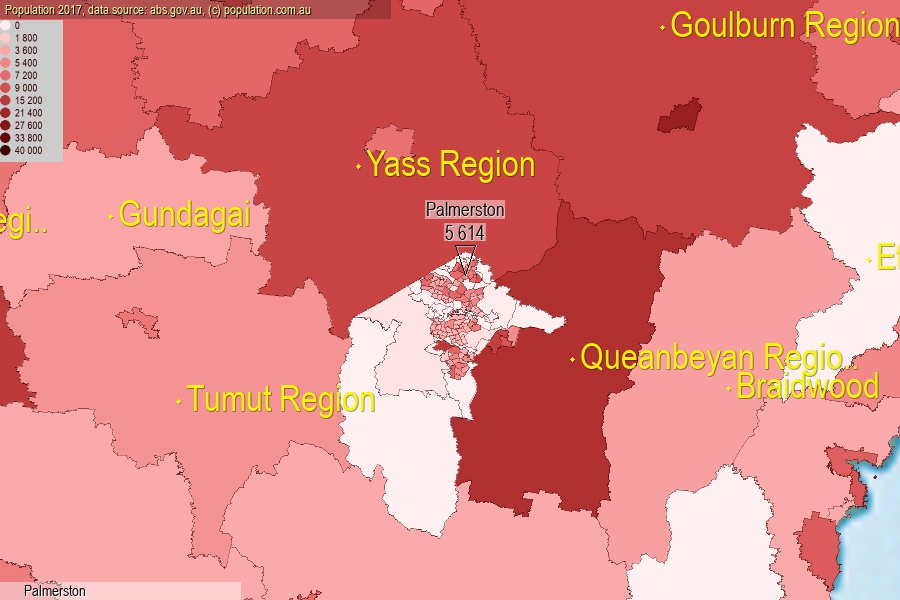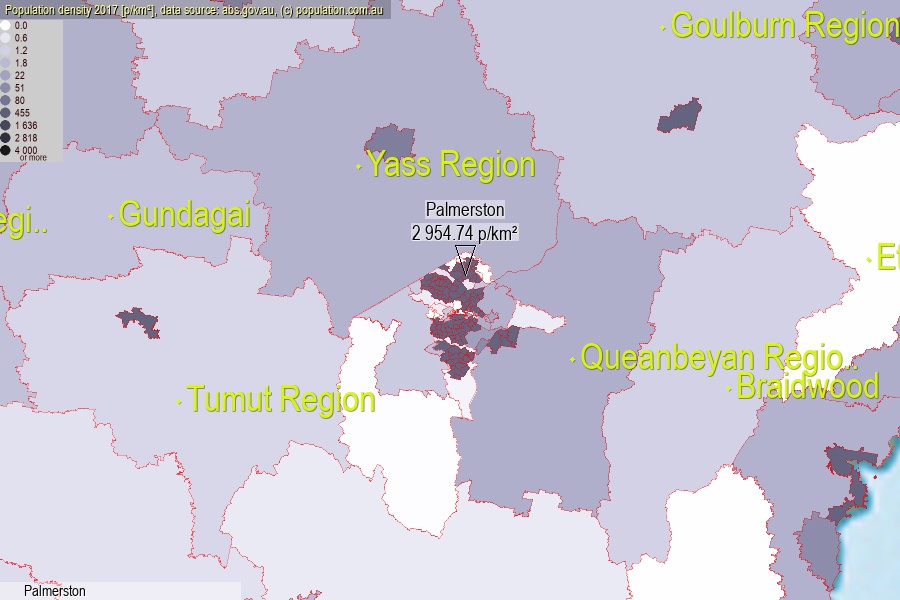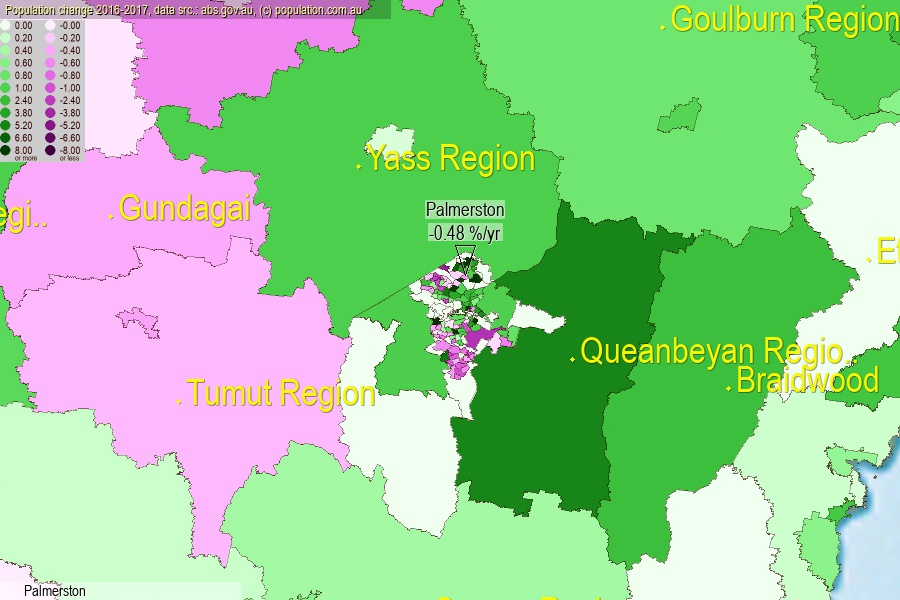 population.com.au
population.com.auLast official estimated population of Palmerston (as Statistical Area Level 2) was 5 614 people (on 2017-06-30)[2]. This was 0.02% of total Australian population and 1.339% of ACT population. Area of Palmerston is 1.90 km², in this year population density was 2 954.74 p/km² . If population growth rate would be same as in period 2016-2017 (-0.48%/yr), Palmerston population in 2025 would be 5 403. [0]



Click to enlarge. Palmerston is located in the center of the images.
Population [people], population density [p./km²] and population change [%/year] [2]
View borders » (new window) [4]
[1991-1992] 0.00 %/Yr.
[1992-1993] +873.65 %/Yr.
[1993-1994] +43.27 %/Yr.
[1994-1995] +11.31 %/Yr.
[1995-1996] +2.99 %/Yr.
[1996-1997] +1.61 %/Yr.
[1997-1998] +1.20 %/Yr.
[1998-1999] +1.15 %/Yr.
[1999-2000] +1.89 %/Yr.
[2000-2001] +4.38 %/Yr.
[2001-2002] +0.73 %/Yr.
[2002-2003] +0.18 %/Yr.
[2003-2004] -0.60 %/Yr.
[2004-2005] -0.46 %/Yr.
[2005-2006] +0.25 %/Yr.
[2006-2007] +0.07 %/Yr.
[2007-2008] +0.30 %/Yr.
[2008-2009] +0.67 %/Yr.
[2009-2010] -0.20 %/Yr.
[2010-2011] -0.89 %/Yr.
[2011-2012] -0.37 %/Yr.
[2012-2013] -0.97 %/Yr.
[2013-2014] -1.59 %/Yr.
[2014-2015] -1.27 %/Yr.
[2015-2016] -0.44 %/Yr.
[2016-2017] -0.48 %/Yr.
[0] Calculated with linear interpolation from officially estimated population
[1] Read more about SA2 and Australian Statistical Geography Standard (ASGS) on abs.gov.au
[2] Population data from Australian Bureau of Statistics (Population and density: 2017; change: 2016-2017)
[3] Digital Boundaries: Australian Statistical Geography Standard (ASGS) 2016.
[4] Border coordinates are simplifyed using Ramer-Douglas-Peucker algorithm.